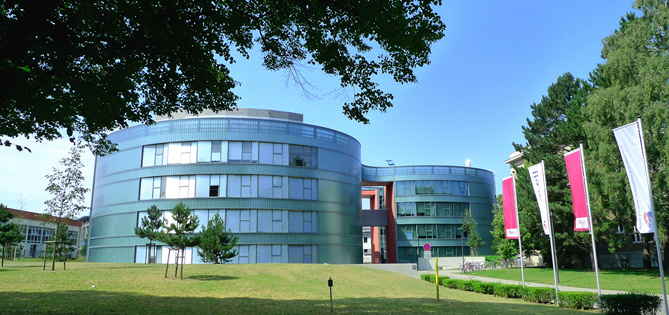J Natl Cancer Inst. 2001; 93:472-479.
Large Nontransplanted hepatocellular carcinoma in woodchucks: treatment with adenovirus-mediated delivery of interleukin-12/B7.1 genes.
Pützer BM, Stiewe T, Rödicker F, Schildgen O, Rühm S, Dirsch O, Fiedler M, Dahmen U, Tennant B, Scherer C, Graham FL, Roggendorf M.
BACKGROUNG:
Cytokine-based gene therapy strategies efficiently stimulate immune responses against many established transplanted tumors, leading to rejection of the tumor. In this study, we investigated the therapeutic potential of cancer immunotherapy in a clinically more relevant model, woodchucks with primary hepatocellular carcinomas induced by woodchuck hepatitis virus.
METHODS:
Large (2-5 cm), established intrahepatic tumors were given an injection once with 1 x 10(9) plaque-forming units of AdIL-12/B7.1, an adenovirus vector carrying genes for murine interleukin 12 and B7.1, or of AdEGFP, the control virus, and regression of the tumors was then monitored. Five animals were used in total.
RESULTS:
In four tumor-bearing animals, the antitumor response was assessed by autopsy and histologic analysis within 1-2 weeks after treatment. In all animals treated with AdIL-12/B7.1 therapy versus AdEGFP therapy, we observed substantial tumor regression (P =.006; two-sided unpaired Student's t test) accompanied by a massive infiltration of T lymphocytes. These tumors also contained increased levels of CD4(+) and CD8(+) T cells and interferon gamma (IFN gamma). In continuously growing tumor nodules given an injection of the control virus or in nontumoral liver, no such effects (i.e., tumor regression and increased levels of CD4(+) and CD8(+) T cells and IFN gamma) were detected. In the fifth animal, monitored for long-term antitumor efficacy by magnetic resonance imaging (MRI) after intratumoral vector administration by MRI guidance, the tumor was almost completely eliminated (> or = 95%) 7 weeks after treatment.
CONCLUSION:
Adenovirus vector-based immunotherapy appears to be an effective treatment of large nontransplanted (orthotopic) tumors that acquire malignant characteristics in a stepwise process, reflecting the real-world scenario of hepatocellular carcinoma in humans.
Cytokine-based gene therapy strategies efficiently stimulate immune responses against many established transplanted tumors, leading to rejection of the tumor. In this study, we investigated the therapeutic potential of cancer immunotherapy in a clinically more relevant model, woodchucks with primary hepatocellular carcinomas induced by woodchuck hepatitis virus.
METHODS:
Large (2-5 cm), established intrahepatic tumors were given an injection once with 1 x 10(9) plaque-forming units of AdIL-12/B7.1, an adenovirus vector carrying genes for murine interleukin 12 and B7.1, or of AdEGFP, the control virus, and regression of the tumors was then monitored. Five animals were used in total.
RESULTS:
In four tumor-bearing animals, the antitumor response was assessed by autopsy and histologic analysis within 1-2 weeks after treatment. In all animals treated with AdIL-12/B7.1 therapy versus AdEGFP therapy, we observed substantial tumor regression (P =.006; two-sided unpaired Student's t test) accompanied by a massive infiltration of T lymphocytes. These tumors also contained increased levels of CD4(+) and CD8(+) T cells and interferon gamma (IFN gamma). In continuously growing tumor nodules given an injection of the control virus or in nontumoral liver, no such effects (i.e., tumor regression and increased levels of CD4(+) and CD8(+) T cells and IFN gamma) were detected. In the fifth animal, monitored for long-term antitumor efficacy by magnetic resonance imaging (MRI) after intratumoral vector administration by MRI guidance, the tumor was almost completely eliminated (> or = 95%) 7 weeks after treatment.
CONCLUSION:
Adenovirus vector-based immunotherapy appears to be an effective treatment of large nontransplanted (orthotopic) tumors that acquire malignant characteristics in a stepwise process, reflecting the real-world scenario of hepatocellular carcinoma in humans.

Kontakt
Institut für Experimentelle Gentherapie und Tumorforschung
Core-Facility Virale Vektor & Genom-Editing Technologien
Biomedizinisches Forschungszentrum
Schillingallee 69
D-18057 Rostock
Sekretariat
Ingrid Winkler
(+49) 381 494-5066(+49) 381 494-5062
ingrid.winkler@med.uni-rostock.de
Department Leben, Licht & Materie
Forschungsbau LL&M
Albert-Einstein-Str. 25
D-18059 Rostock
Forschungsbau LL&M
Albert-Einstein-Str. 25
D-18059 Rostock




